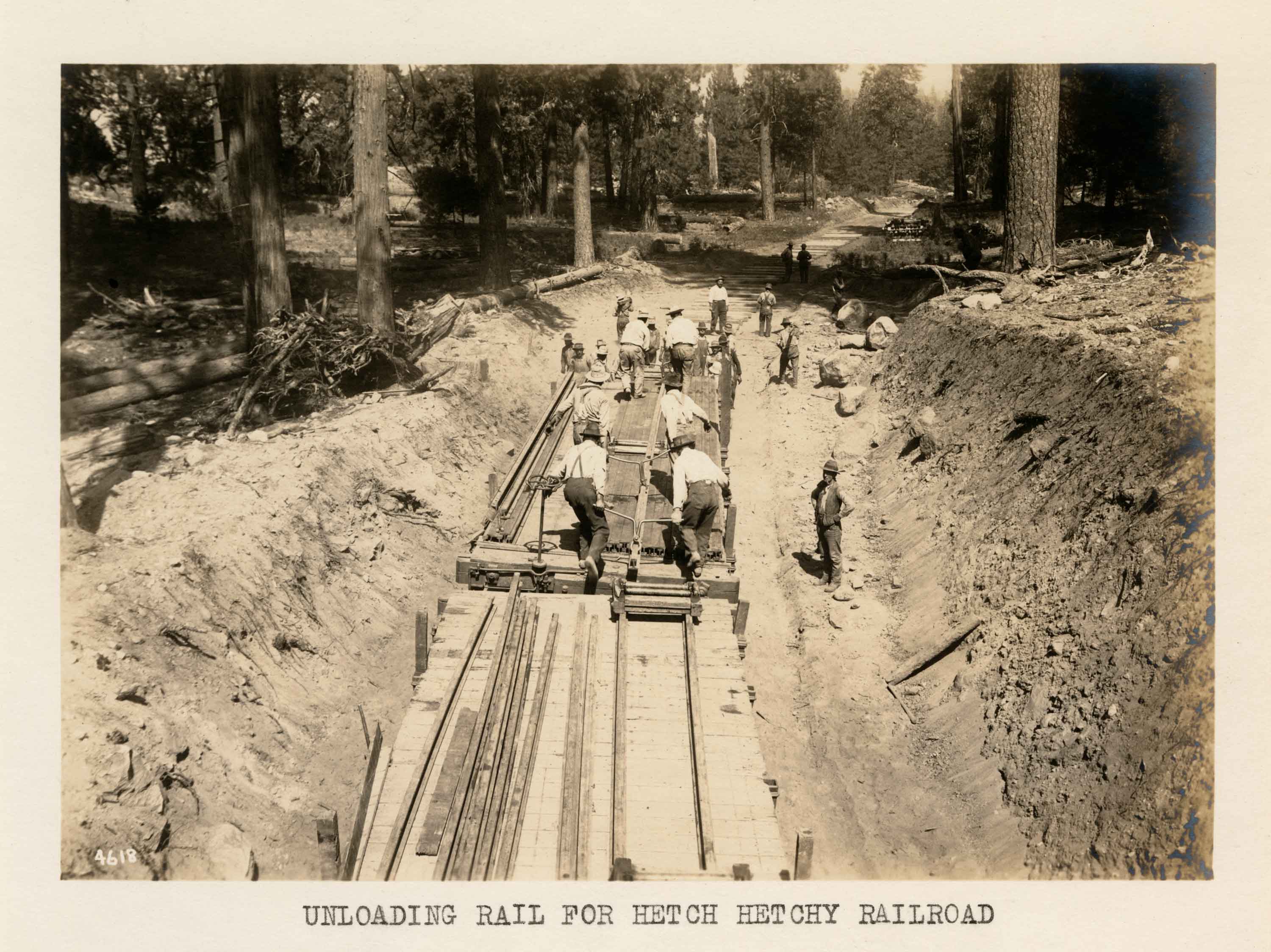 Group of men on the Hetch Hetchy Railroad. Courtesy of the University of California, Berkeley, Bancroft Library.
Group of men on the Hetch Hetchy Railroad. Courtesy of the University of California, Berkeley, Bancroft Library.
The O’Shaughnessy Dam required massive amounts of raw material to build. Tons of cement, sand, and aggregate stones (ranging from small gravel to large boulders) were necessary for its concrete structure alone. Transporting large quantities of heavy materials was no easy task in the first decades of the twentieth century, let alone up a mountain range. This transit problem needed to be solved before any significant construction work on the dam could begin. The railroad was unmatched in freight transport in the first half of the century, conveying huge amounts of material across long distances. Steep climbs and winding mountain passes made the path up to Hetch Hetchy quite the difficult place to build a railroad. The costs were evaluated, and the railroad won out: it would become the method of transit for men and materials ascending toward the Hetch Hetchy Valley.
 Workers at Hetch Hetchy Railroad, 1916-1917. Courtesy of
Workers at Hetch Hetchy Railroad, 1916-1917. Courtesy ofSan Francisco Public Library.
 Hetch Hetchy Railroad construction, 1916-1917. Courtesy of
Hetch Hetchy Railroad construction, 1916-1917. Courtesy ofSan Francisco Public Library.
The Utah Construction Company was contracted to grade the last nine miles of roadbed from Hog Ranch to Hetch Hetchy Valley, the final portion of what would become the Hetch Hetchy Railroad. Though the Utah Construction Company was not responsible for the railway’s construction, it had prepared the last portion of the grade for its eventual rails and ties.
The contract for construction of the railway itself was awarded to Frederick Rolandi, in December of 1915.
 Laying the tracks for the railroad. Courtesy of the University of California, Berkeley, Bancroft Library.
Laying the tracks for the railroad. Courtesy of the University of California, Berkeley, Bancroft Library.
Hetch Hetchy’s railroad was the main artery of construction supplies and workers, making quick and efficient dam construction possible. The track had its growing pains as rail traffic ramped up with the main construction of the O’Shaughnessy Dam, but it served admirably as a crucial part of construction work in and around Hetch Hetchy. This did not last forever, though.
Once construction wound down on the O’Shaughnessy Dam and its related projects by the 1930s, the railroad traffic dwindled as well. The rails and ties were eventually removed in 1949, after they were no longer used. Some parts of the railbed live on as portions of modern roadways, but one would be hard-pressed to find evidence of most of the winding Hetch Hetchy Railroad’s route today. The railroad engineers had accomplished their mission with minimal scarring of the mountain scenery.
 Derrick timbers during preliminary work, 1916. Courtesy of San Francisco Public Library.
Derrick timbers during preliminary work, 1916. Courtesy of San Francisco Public Library.
